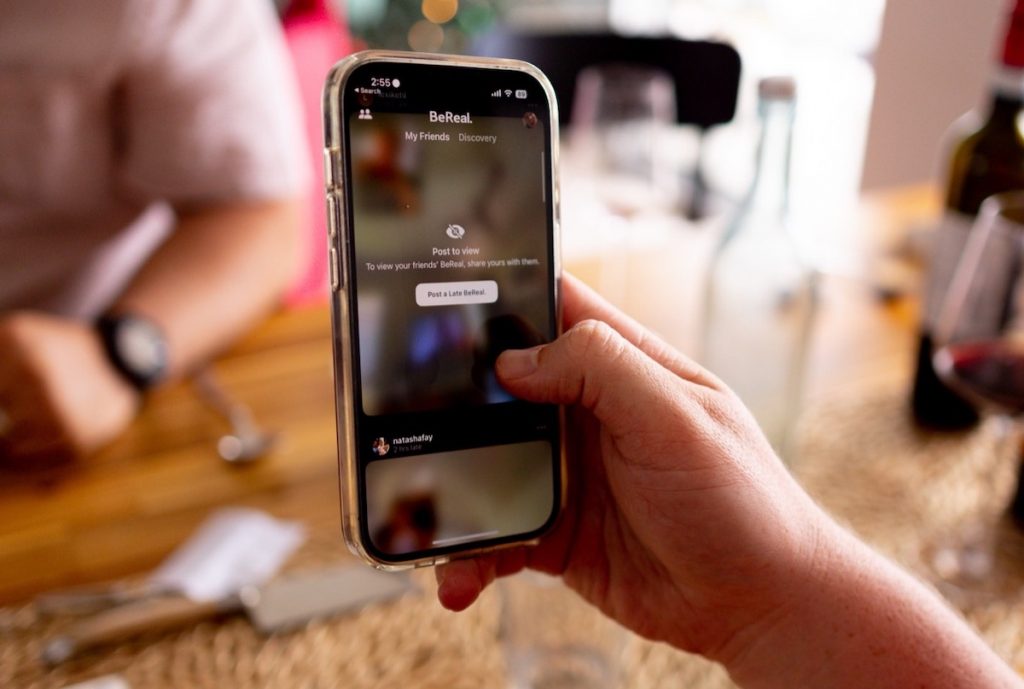
Rates of youth suicide have increased in many parts of the world, with concerning trends in self-harm and suicide behaviour being observed particularly among young women (Glenn et al., 2020; World Health Organisation, 2019). There are several reasons for this: unprecedented rates of psychological distress, greater academic pressure, rates of peer conflict and cyberbullying, and for many young people, mental health support is inaccessible, expensive, and highly stigmatised. Alongside these risk factors, some have argued that increases in suicide and self-harm are associated with young people spending an increased amount of time online, particularly on social media (Macrynikola et al., 2021; Marchant et al., 2017).
The extent to which online interactions, and the internet more broadly, play a role in youth suicide is complex. For some young people, evidence points to social media being used to promote distressing content and share unhelpful self-harm or suicide-related information, potentially leading to imitative behaviour or contagion (Arendt et al., 2019; Dunlop, More & Romer, 2011; Hawton et al., 2020; Yellow, 2020). However, for other young people, social media can be an important source of peer-connection and support-seeking, particularly for topics that are difficult to talk about offline or are regarded as taboo (Baker & Fortune, 2008; Gibson & Trnka, 2020; Lavis & Winter, 2020; Nasier, Gibson, & Trnka, 2021). A growing body of work also supports the utility of social media as a tool for suicide prevention and to share helpful messages and information; both to users who are at risk themselves, as well as those who are exposed to risk displayed online by others (Robinson et al., 2016; Robinson et al., 2018, La Sala et al., 2021; La Sala et al., In Press).
While there have been many cross-sectional and qualitative investigations examining self-reported associations between social media use and various mental health outcomes, a more recent study has taken a different approach. Given the mixed evidence regarding the internet’s contribution to suicide in both adult (Gunnell et al., 2012) and youth (Padmanathan et al., 2020) samples, Rodway et al. (2022) retrospectively explored the online experiences of young people aged 10 to 19 years who died by suicide in the UK between 2014 and 2016. The study aimed to explore any differences in the antecedents and methods of suicide for young people known to have had a suicide-related online experience.

Social media can play both a helpful and unhelpful role in youth suicide prevention.
Methods
Data were sourced primarily from coroner inquest hearings (n=526; 88%), as well as NHS serious incident reports (n=10) and child death investigations (n=8). Based on the information available in these reports, the authors categorised each youth suicide as having the presence or absence of an online suicide-related experience prior to death. Online suicide-related experiences were defined as either:
- Searching the internet for information on suicide methods
- Visiting websites or chat rooms that may have encouraged suicidal behaviour
- Communicating about their own suicidal ideation or intent online, or
- Being the victim of online bullying.
Recent experiences were those that had been reported in the three months prior to the young person’s death.
The authors used logistic regression models adjusting for gender, age, and the presence of any mental health conditions to measure the association between suicide-related online experiences and other demographic, social and clinical characteristics of the young people who had died by suicide. Multinomial logistic regression models were used to analyse the antecedents of those known to have had multiple suicide-related online experiences.
The authors considered three groups:
- Those who had more than one suicide-related online experience (35 people),
- Those who had only one suicide-related online experience (93 people), and
- Those who had no recorded history of any suicide-related online experience (416 people).
Odds ratios and relative risk ratios (with 95% confidence intervals) were presented.
Results
Between 2014 and 2016, there were 595 suicides in the UK by those aged under 20 years; 544 of which had available demographic information, as well as available medical, psychiatric, and social antecedents of suicide information. Of the 544 recorded deaths, 128 (24%) were categorised as having had a suicide-related online experience, of which most were male (n=78) and aged under 18 years (n=77).
The most common type of suicide-related online experience was searching for information about suicide method, followed by communicating online about one’s own suicidal ideas or intent, with girls more likely than boys to have had a suicide-related online experience prior to death (32% compared to 20%, respectively). 6% of the sample had experienced multiple suicide-related online experiences.
Young people who identified as LGBT, being in employment, and who were bullied face-to-face were twice as likely to have had a suicide-related online experience. Other significant antecedents among those who had suicide-related online experience included: social isolation, neglect, bereavement (by suicide), prior self-harm, mental illness, and physical health problems.

24% of young people aged under 20 years old who died by suicide in the UK between 2014-2016 had a suicide-related online experience prior to their death.
Conclusions
Findings from this study suggest that suicide-related online experiences may be a common, but likely underestimated, antecedent to suicide in young people. This study makes a significant contribution to the literature exploring the relationship between the internet and suicide-related outcomes. Supporting the findings of previous studies (e.g., Gunnell et al., 2012, Mars et al., 2015, Padmanathan et al., 2020), a quarter of suicide deaths in this study were associated with suicide-related online experiences. Such findings strengthen the need to further explore the type of content that young people share and are exposed to online.
The authors of this study fairly conclude that while some young people at risk of suicide are…
using the internet to research possible methods, communicate their suicidal thoughts and, to a limited extent, seek encouragement for their actions…. the right balance between freedom of expression and public protection needs to be struck, whilst also acknowledging that the internet can be helpful for young people’s mental health and can play a role in preventing suicide.
Being aware that the internet can be both helpful and harmful is important when considering the role online safety plays in suicide prevention efforts moving forward.

The authors concluded that “the right balance between freedom of expression and public protection needs to be struck” to prevent suicide.
Strengths and limitations
By accessing such rich data through inquest hearings, serious incident reports, and testimonies from those known to the individual who died by suicide, this paper has provided a significant contribution to the literature and raises some important questions about the role of internet experiences in the lead up to a young person’s suicide. The coding of suicide-related online experience seems to appropriately represent the ways young people use the internet for suicide-related purposes, while relying on data that are stored or retrospectively available.
A limitation of this approach, however, lies in the quality and availability of data accessible to researchers after a suicide occurs. For instance, after a confirmed or suspected suicide, young people in the UK had their devices searched for online suicide-related experiences, of which 41 individuals did not meet the four criteria for an online experience as listed above, 14 had password-protected accounts, and 9 had recently deleted all their data. These 64 cases were coded as having no online suicide-related experiences, which is quite likely to be incorrect. The absence of this information, particularly in cases where data were deleted, does not mean that these experiences were not had, and does not consider the various ways young people are known to engage with this content online (Brennan et al., 2022). Research with young people who communicate online about self-harm and suicide suggests that young people often prefer to have these conversations in temporal spaces (e.g., Snapchat) that limit their permanency and make it difficult to capture such data in the first place. A challenge for all researchers examining this topic is the limited access to objective and accurate data regarding what someone posts or is exposed to online, particularly in closed groups or more private spaces. This is made more difficult by the creative (and arguably necessary) ways young people use the internet (e.g., different hashtags) to circumvent website or platform restrictions (Brennan et al., 2022; Samaritans, 2022).
This study was unable to differentiate between helpful or harmful suicide-related online experiences, and the authors were also unable to determine whether a young person had used the internet for help-seeking, and what role that might have played prior to death. This is also true of those who were not coded as having had suicide-related online experiences, and perhaps those young people who struggle with suicidal thoughts more generally. Indeed, it may be that they had also used the internet to search for general mental health support that did not meet the criteria of ‘suicide-related’ searches.

Considering online interactions is important, however, retrospectively gaining access to someone’s online conversation or search history is challenging.
Implications for practice
The literature supports the notion that our online interactions and the content that we are exposed to have an impact on our mental health, both positively and negatively. As mentioned above, our work has taken a harm minimisation approach by upskilling and empowering young people to post about these topics safely and feel better able to navigate harmful content when they are exposed to it (see Robinson et al., 2018; La Sala et al., 2021; La Sala et al., In Press; Thorn et al., 2020). However, whilst upskilling young people to keep themselves and others safe online is important, it is unfair to expect them to hold this responsibility alone. Therefore, it is time to consider what more governments and the social media industry can be doing to protect young people when interacting online.
Papers such as the one by Rodway et al. highlight the importance of talking to young people about their online interactions and the content that they are exposed to, which might be particularly important for young people who are struggling. The three ‘S’ words – suicide, self-harm, and social media – are difficult topics for parents and professionals to discuss with young people. Having these conversations often, and early, might mitigate negative outcomes, and enquiring about online interactions needs to occur in both familial and clinical check-ins.

Enquiring about a young person’s internet behaviour is an important conversation for professionals and families to have regularly with young people.
Statements of interest
Louise La Sala and Jo Robinson are researchers on the #chatsafe project, a program of work designed to support young people to communicate safely online about self-harm and suicide.
Links
Primary paper
Rodway, C., Tham, S., Richards, N., Ibrahim, S., Turnbull, P., Kapur, N., & Appleby, L. (2022). Online harms? Suicide-related online experience: A UK-wide case series study of young people who die by suicide. Psychological Medicine, 1-12. doi:10.1017/S0033291722001258
Other references
Arendt F, Scherr S, Romer D. Effects of exposure to self-harm on social media: Evidence from a two-wave panel study among young adults. New Media & Society. 2019;21(11-12):2422-42.
Baker, D.T., & Fortune, S. (2008). Understanding self-harm and suicide websites: a qualitative interview study of young adult website users. Crisis, 29 3, 118-22.
Brennan, C., Saraiva, S., Mitchell, E., Melia, R., Campbell, L., King, N., & House, A. (2022). Self-harm and suicidal content online, harmful or helpful? A systematic review of the recent evidence. Journal of Public Mental Health, 21(1), 57-69.
Dunlop SM, More E, Romer D. Where do youth learn about suicides on the Internet, and what influence does this have on suicidal ideation? Journal of child psychology and psychiatry. 2011;52(10):1073-80.
Gibson, K., & Trnka, S. (2020). Young people’s priorities for support on social media: “It takes trust to talk about these issues”. Computers in Human Behavior, 102, 238-247.
Glenn CR, Kleiman EM, Kellerman J, Pollak O, Cha CB, Esposito EC, et al. Annual Research Review: A meta-analytic review of worldwide suicide rates in adolescents. J Child Psychol Psychiatry. 2020 Mar;61(3):294-308. PMID: 31373003. doi: 10.1111/jcpp.13106.
Gunnell, D., Bennewith, O., Kapur, N., Simkin, S., Cooper, J., & Hawton, K. (2012). The use of the Internet by people who die by suicide in England: A cross sectional study. Journal of Affective Disorders, 141(2–3), 480–483.
Hawton, K., Hill, N. T. M., Gould, M., John, A., Lascelles, K., & Robinson, J. (2020). Clustering of suicides in children and adolescents. Lancet Child and Adolescent Health, 4(1), 58-67.
La Sala, L., Pirkis, J., Cooper, C., Hil;, N. T. M., Lamblin, M., Rajaram, G., Rice, S., Thorn, P., Zahan, R., & Robinson, J. (In Press). Acceptability and Potential Impact of the #chatsafe Suicide Postvention Response Among Young People Who Have Been Exposed to Suicide: Pilot Study. JMIR Hum Factors. Accepted 2023 Mar 9.
La Sala, L., Teh, Z., Lamblin, M., Rajaram, G., Rice, S., Hill, N. T., …Robinson, J. (2021). Can a social media intervention improve online communication about suicide? A feasibility study examining the acceptability and potential impact of the #chatsafe campaign. PloS One, 16(6), e0253278.
Lavis, A., & Winter, R. (2020). #Online harms or benefits? An ethnographic analysis of the positives and negatives of peer‐support around self‐harm on social media. Journal of Child Psychology and Psychiatry, 61(8), 842-854.
Macrynikola, N., Auad, E., Menjivar, J., & Miranda, R. (2021). Does social media use confer suicide risk? A systematic review of the evidence. Computers in Human Behavior Reports, 3, 100094.
Marchant, A., Hawton, K., Stewart, A., Montgomery, P., Singaravelu, V., Lloyd, K.R., Purdy, N., Daine, K., & John, A. (2017). A systematic review of the relationship between internet use, self-harm and suicidal behaviour in young people: The good, the bad and the unknown. PLoS ONE, 12.
Mars, B., Heron, J., Biddle, L., Donovan, J. L., Holley, R., Piper, M., … Gunnell, D. (2015). Exposure to, and searching for, information about suicide and self-harm on the internet: Prevalence and predictors in a population based cohort of young adults. Journal of Affective Disorders, 185, 239–245.
Nasier, B., Gibson, K., & Trnka, S. (2021). “PM me” or “LOL”: Young peoples’ observations of supportive and unsympathetic responses to distress on social media. Computers in Human Behavior, 124, 106933.
Padmanathan, P., Bould, H., Winstone, L., Moran, P., & Gunnell, D. (2020). Social media use, economic recession and income inequality in relation to trends in youth suicide in high-income countries: A time trends analysis. Journal of Affective Disorders, 275, 58–65.
Robinson, J., Cox, G., Bailey, E., Hetrick, S., Rodrigues, M., Fisher, S., & Herrman, H. (2016). Social media and suicide prevention: A systematic review. Early Intervention in Psychiatry, 10(2), 103-121.
Robinson, J., Hill, N. T., Thorn, P., Battersby, R., Teh, Z., Reavley, N. J., …Skehan, J. (2018). The #chatsafe project. Developing guidelines to help young people communicate safely about suicide on social media: A Delphi study. PLoS One, 13(11), e0206584.
Samaritans. (2022). How social media users experience self-harm and suicide content.
Thorn, P., Hill, N. T., Lamblin, M., Teh, Z., Battersby-Coulter, R., Rice, S., …Robinson, J. (2020). Developing a suicide prevention social media campaign with young people (The #Chatsafe project): Co-design approach. JMIR Mental Health, 7(5), e17520.
World Health Organisation. (2019). Suicide Data 2019.
Yellow. (2020). Yellow Social Media Report 2020. Part One – Consumers.
Photo credits
- Photo by bruce mars on Unsplash
- Photo by John Schnobrich on Unsplash
- Photo by Josh Withers on Unsplash

Thank you to the authors for this insightful article. The finding that young people who identified as LGBT, were employed, and experienced face-to-face bullying were at a higher risk of having suicide-related online experiences underscores the importance of targeted support and interventions to address the unique challenges faced by these vulnerable populations.